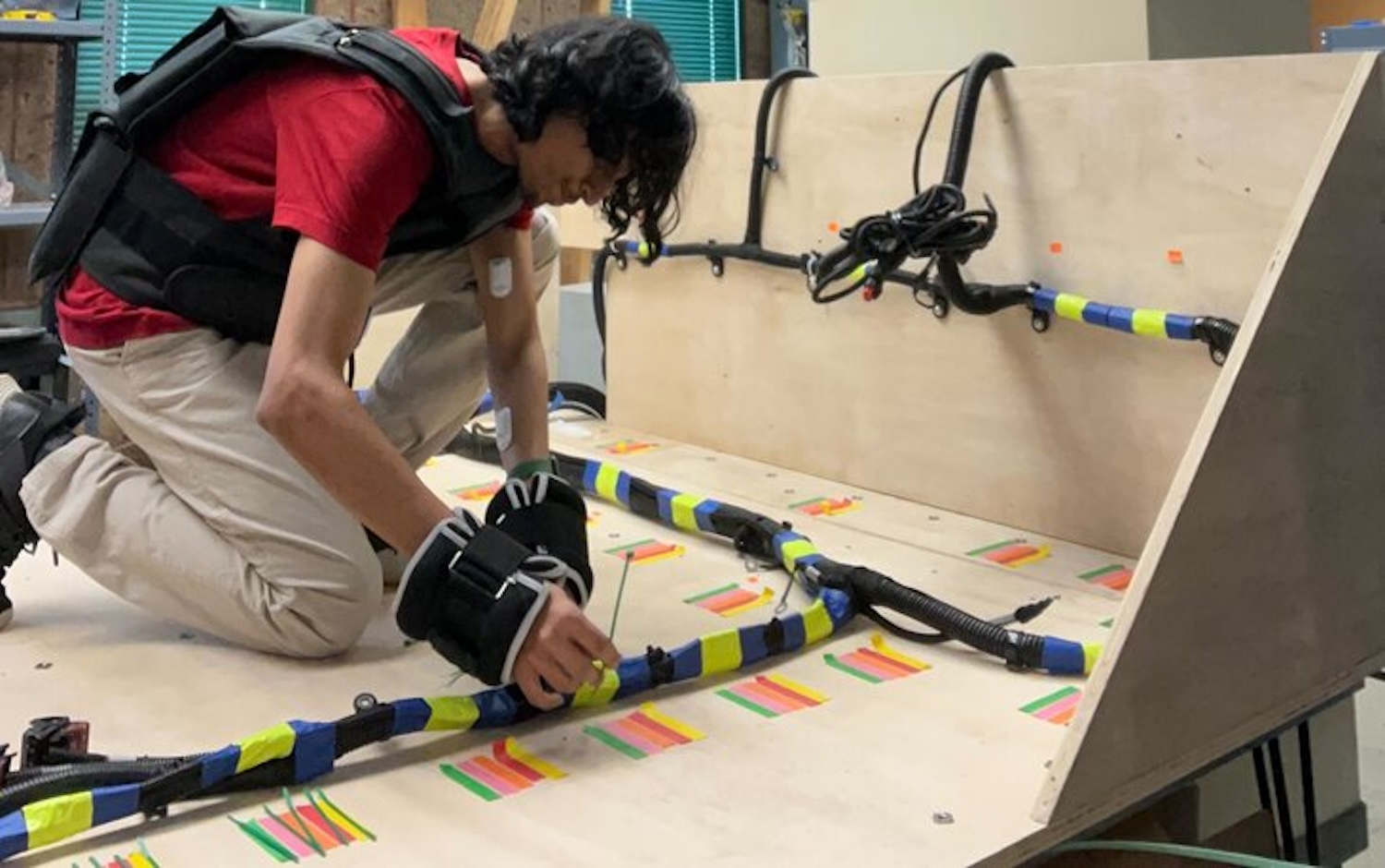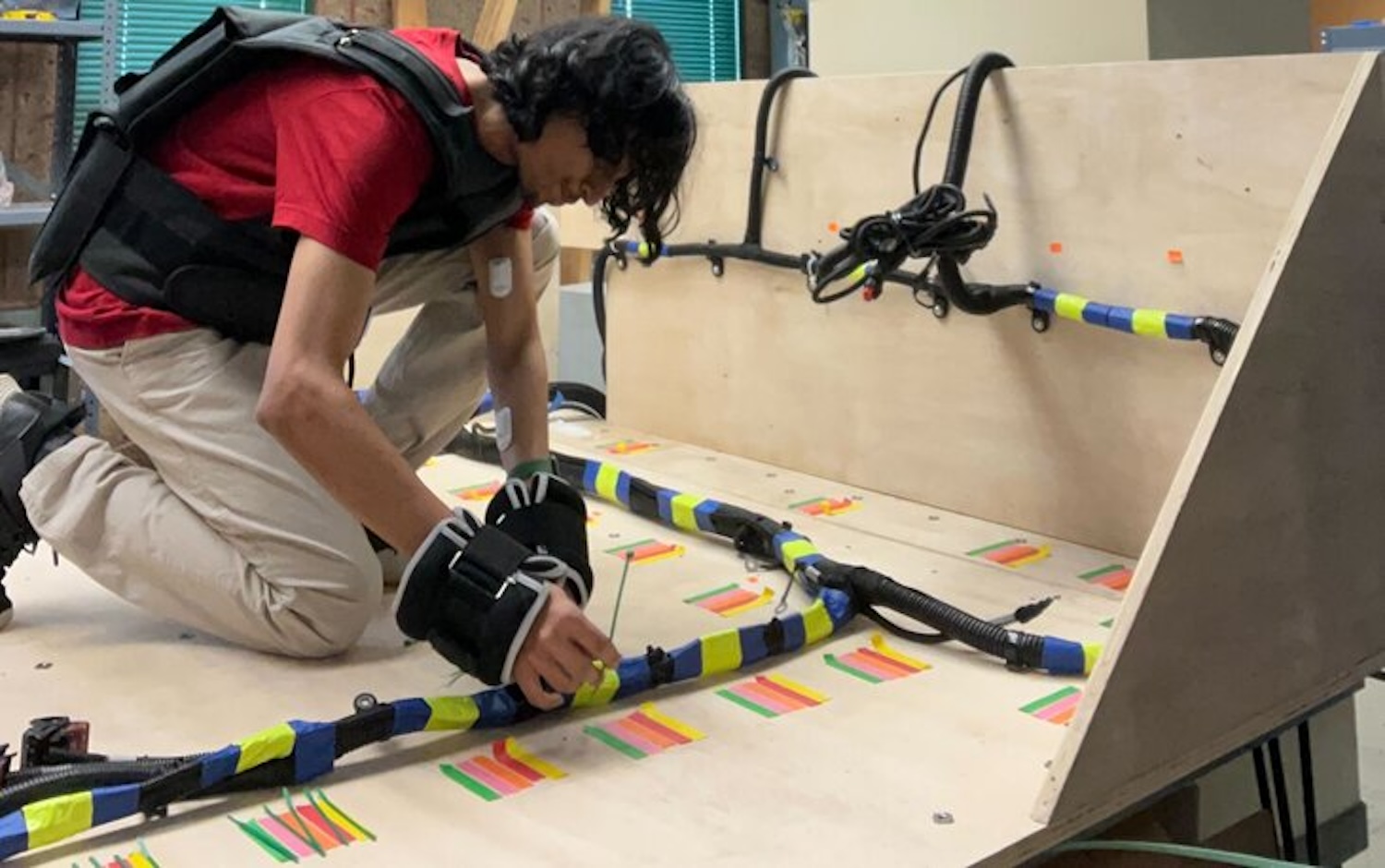
Manufacturing jobs have some of the highest injury rates of any industry, often due to workers’ high levels of physical and mental fatigue. In an attempt to improve job sites, researchers have designed a system of wearable sensors that rely on machine learning to monitor workers for signs of physical strain and tiredness. In doing so, they hope their new devices will help prevent accidents and injuries.
The design is detailed in a study published by a team at Northwestern University in the October issue of PNAS Nexus. To measure fatigue and physical health, researchers developed an interconnected array of six wearable sensors placed across a wearer’s torso and arms. These were coupled with two depth cameras to measure joint movements and an HD webcam to analyze movement intensity, repetition, and diminished strength over time. Once enabled, these devices continuously monitored heart rate, skin temperature, and locomotion patterns. But given that there are no widely accepted, universal biomarker metrics for fatigue, researchers relied on the wearer’s self-reported perceived exertion levels on a 0-10 scale that they then entered into a machine learning model. Once trained, this model was then used to predict a user’s fatigue levels in real-time to provide a “more nuanced understanding of the subject’s physical state” than past studies, according to researchers.
“The adoption of new technologies for real-time fatigue prediction holds the potential to revolutionize manufacturing by optimizing work schedules and implementing adaptive work/rest cycles, [while also] addressing the issue of a lack of deterministic biomarkers,” the team wrote in their paper.
To test their system, the group recruited 43 participants between the ages of 18 and 56, then tasked them with mimicking two difficult manufacturing jobs—wire harnessing and composite sheet layup. In these scenarios, however, the volunteers also wore weighted vests as heavy as 40 lbs to fast-forward fatigue levels to those usually felt by the end of a shift. From there, researchers monitored the sensor readings, as well as the machine learning program’s predictions. Researchers even took their sensors (minus the extra weights) outside the lab setting and offered them to actual manufacturing industry workers at two factory locations, who noted the system was easy-to-use and unobtrusive.
[Related: BMW puts humanoid robots in South Carolina factory.]
According to the study’s results, one of the immediate takeaways is the confirmation that “true meaningful feedback” about fatigue requires viewing exertion as a “continuous variable.” Many existing methodologies classify an individual as either fatigued or non-fatigued, they wrote, which is simply not helpful enough in implementing preemptive safety measures.
Additionally, given that every body is different, the best mix of physical indicators for fatigue can vary by individual depending on factors like their age, gender, and weight—but there were still some universal trends observed during the two manufacturing tasks. One of the most telling signs of exertion, for example, can be found in fatigue levels measured in a user’s nondominant arm. Another indicator could be found by measuring the intensity of ambulatory movements for a worker using their chest sensor. The sensor recordings for common signs of fatigue like increased heart rate, elevated body temperatures, and perspiration also helped inform the modeling for assessing exertion.
Researchers hope that sensor systems similar to their own will help provide more accurate and helpful monitors of real-time manual labor fatigue in factories. To help this along, they made their methods designs available online as open-access materials.
Technology, however, is only as helpful as its overseers allow it to be. Because of this, the team acknowledged it’s vital that manufacturing companies be held to ethical and responsible standards when using these devices.
“Although our overarching goal through this research is to ensure worker safety, mitigate risks, and empower operators through active feedback, we recognize the ethical and legal considerations associated with deploying such systems in real-world workplace environments,” the researchers wrote. “We are hopeful that ongoing technical advancements, including our efforts in predicting physical fatigue in manufacturing settings, will inspire constructive discussions about deployment.”

